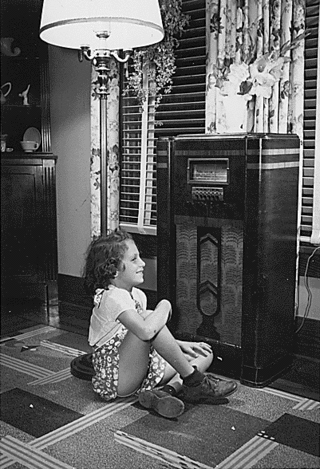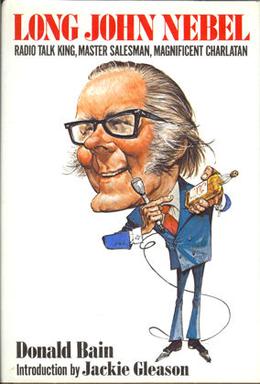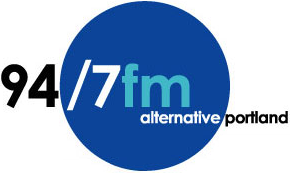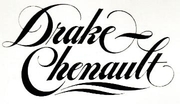
The Golden Age of Radio, also known as the old-time radio (OTR) era, was an era of radio in the United States where it was the dominant electronic home entertainment medium. It began with the birth of commercial radio broadcasting in the early 1920s and lasted through the 1950s, when television gradually superseded radio as the medium of choice for scripted programming, variety and dramatic shows.
A blooper is a short clip from a film or video production, usually a deleted scene, containing a mistake made by a member of the cast or crew. It also refers to an error made during a live radio or TV broadcast or news report, usually in terms of misspoken words or technical errors. The term blooper was popularized in the 1950s and 1960s in a series of record albums produced by Kermit Schafer entitled Pardon My Blooper, in which the definition of a blooper is thus given by the record series' narrator: "Unintended indiscretions before microphone and camera."

Monaural or monophonic sound reproduction is sound intended to be heard as if it were emanating from one position. This contrasts with stereophonic sound or stereo, which uses two separate audio channels to reproduce sound from two microphones on the right and left side, which is reproduced with two separate loudspeakers to give a sense of the direction of sound sources. In mono, only one loudspeaker is necessary, but, when played through multiple loudspeakers or headphones, identical signals are fed to each speaker, resulting in the perception of one-channel sound "imaging" in one sonic space between the speakers. Monaural recordings, like stereo ones, typically use multiple microphones fed into multiple channels on a recording console, but each channel is "panned" to the center. In the final stage, the various center-panned signal paths are usually mixed down to two identical tracks, which, because they are identical, are perceived upon playback as representing a single unified signal at a single place in the soundstage. In some cases, multitrack sources are mixed to a one-track tape, thus becoming one signal. In the mastering stage, particularly in the days of mono records, the one- or two-track mono master tape was then transferred to a one-track lathe used to produce a master disc intended to be used in the pressing of a monophonic record. Today, however, monaural recordings are usually mastered to be played on stereo and multi-track formats, yet retain their center-panned mono soundstage characteristics.
KHJ is a commercial AM radio station that is licensed to Los Angeles, California. Owned and operated by Relevant Radio, Inc., the station broadcasts Roman Catholic religious programming as an affiliate of the Relevant Radio network.
Voice-tracking, also called cyber jocking and referred to sometimes colloquially as a robojock, is a technique employed by some radio stations in radio broadcasting to produce the illusion of a live disc jockey or announcer sitting in the radio studios of the station when one is not actually present. It is one of the notable effects of radio homogenization.
Broadcast automation incorporates the use of broadcast programming technology to automate broadcasting operations. Used either at a broadcast network, radio station or a television station, it can run a facility in the absence of a human operator. They can also run in a live assist mode when there are on-air personnel present at the master control, television studio or control room.
Swinging Radio England ("SRE") was a top 40 offshore commercial station billed as the "World's Most Powerful" that operated from 3 May 1966 to 13 November 1966 from a ship in the North Sea, four and a half miles off Frinton-on-Sea, Essex, England. While the station was dubbed a pirate radio station, its operation took place within the law and its offices were in the West End of London. Its representation was by a company formed earlier in the year to represent in Europe the ABC radio and television stations of the United States.

Stereophonic sound, or more commonly stereo, is a method of sound reproduction that recreates a multi-directional, 3-dimensional audible perspective. This is usually achieved by using two independent audio channels through a configuration of two loudspeakers in such a way as to create the impression of sound heard from various directions, as in natural hearing.
WLOL is a radio station in the Twin Cities region of Minnesota. It broadcasts a Catholic Radio format and is part of the Relevant Radio network. WLOL's transmitter is located along the Minnesota River in Savage.
KRTH is a commercial radio station that is licensed to Los Angeles, California, United States and serves the Greater Los Angeles area. The station is owned by Audacy, Inc. and broadcasts a classic hits format. KRTH's studios are located on Wilshire Boulevard in the Miracle Mile district of Los Angeles. The station's signal covers an extremely large area of Southern California due in part to its antenna location on Mt. Wilson. It can be heard as far south as San Diego, as far east as Moreno Valley, as far west as Santa Barbara, and as far north as Barstow. KRTH is the flagship station for the nationally syndicated program Rewind with Gary Bryan.

1-inch type A is a reel-to-reel helical scan analog recording videotape format developed by Ampex in 1965, that was one of the first standardized reel-to-reel magnetic tape formats in the 1–inch (25 mm) width; most others of that size at that time were proprietary. It was capable of 350 lines.

Long John Nebel was an influential New York City talk radio show host.

Jones Radio Networks & Jones Media Group were branches of Jones International before being sold to Triton Media Group. JRN and JMN provide local radio stations with satellite-delivered formats. They also offer other services to local radio such as news and talk programs, syndicated radio shows, music scheduling, show preparation, and music and sales Research. Jones Media Network also owns many national syndication shows such as Lia, All Night with Danny Wright, The Ed Schultz Show, The Stephanie Miller Show, The Bill Press Show, The Neal Boortz Show, The Clark Howard Show, and A&E Network's Live by Request. Jones Media Networks & Jones Radio Networks own production studios in: New York, NY; Los Angeles; Chicago; Washington, DC; Seattle, WA; Centennial, CO; and Florida. Clark Howard and Neal Boortz are broadcast from the studios of WSB-AM in Atlanta, GA; those shows are produced by Cox Radio. Jones Media Networks reaches about 1.3 billion weekly listeners in radio. In 2006, Jones purchased TM Century, a Dallas-based company providing jingles and production services for radio stations across the country.

WHYN is a commercial AM news/talk radio station licensed to Springfield, Massachusetts. It serves the Pioneer Valley area of western Massachusetts and is owned by iHeartMedia. Studios and offices are on Main Street in Springfield. The transmitter is on County Road in Southampton. WHYN operates at 5,000 watts by day, using a directional antenna, but must reduce power to 1,000 watts at night to avoid interfering with other stations on 560 kHz.

KNRK is a commercial radio station licensed to Camas, Washington, serving the Portland metropolitan area. It is owned by Audacy, Inc. and airs an alternative rock radio format. KNRK's studios and offices are located on SW Bancroft Street in Downtown Portland. while the station transmitter is located off SW Fairmont Court in Portland.
John R. was an American radio disc jockey who attained fame in the 1950s and 1960s for playing rhythm and blues music on Nashville radio station WLAC. He was also a notable record producer and artist manager.

KCSM is a radio station in San Mateo, California, broadcasting locally on 91.1 MHz. The station broadcasts jazz music, 24 hours a day, commercial-free. The radio station is not-for-profit, and listener-supported. The broadcast is mirrored as streaming media on the World Wide Web, extending the station's audience far beyond the Bay Area. Owned by the San Mateo Community College District, the station serves the San Francisco Bay Area from studios and a transmitter both located on campus of the College of San Mateo.

Drake-Chenault Enterprises was a radio syndication company that specialized in automation on FM radio stations. The company was founded in the late-1960s by radio programmer and deejay Bill Drake (1937–2008), and his business partner, Lester Eugene Chenault (1919–2010). Drake-Chenault was the predecessor of Jones Radio Networks with its syndicated satellite-delivered formats.
William Roscoe Mercer (1927–2000), better known to millions of radio listeners simply as Rosko, was an American announcer, commercial voice over specialist and disc jockey (DJ). He is best known for his stints on New York's WOR-FM and WNEW-FM in the late 1960s and 1970s. He was often a rare African-American voice on radio stations that primarily broadcast to white audiences.
KJAE is a radio station broadcasting a country music format. Licensed to Leesville, Louisiana, United States, the station serves Vernon Parish and surrounding areas from a studio located in Leesville, Louisiana. The station is currently owned by Pene Broadcasting Company, Inc.








